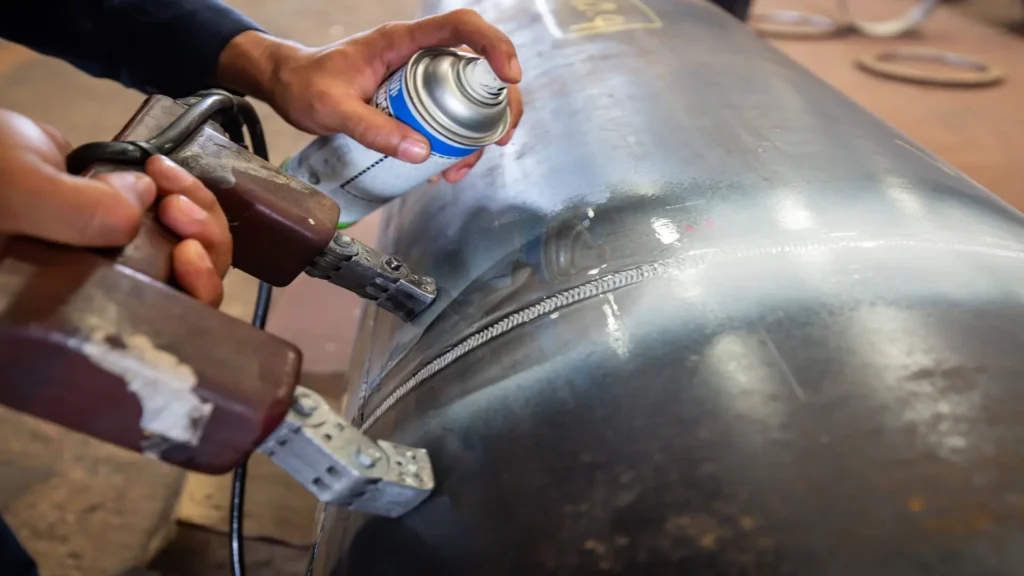Top Advantages of Hiring Professionals for Welding Inspection Madison
Top Advantages of Hiring Professionals for Welding Inspection Madison
Blog Article
Checking Out Advanced Equipment and Techniques for Accurate Welding Examination
In the realm of welding assessment, the search of accuracy and integrity is vital, spurring the advancement of cutting-edge devices and methods. Laser scanning technologies and automated inspection systems, geared up with synthetic intelligence, are redefining the landscape by reducing human mistake and improving security steps.
Ultrasonic Checking Advancements
Ultrasonic screening developments frequently represent the center of developments in welding examination modern technologies. These innovations have significantly improved the capability to find and examine gaps within bonded frameworks, guaranteeing improved stability and security.

In addition, advancements in software formulas for information evaluation have actually improved the precision of flaw detection and sizing. Automated ultrasonic screening systems currently provide high-resolution imaging, enabling thorough evaluations of weld top quality. These systems are usually incorporated with advanced visualization tools, which facilitate the interpretation of outcomes.
Radiographic Examination Techniques
While ultrasonic testing advancements have established a high standard in non-destructive assessment, radiographic inspection methods proceed to play an indispensable role in welding evaluation by offering one-of-a-kind understandings into material integrity. Radiographic screening (RT) utilizes using X-rays or gamma rays to penetrate materials, developing a radiograph that aesthetically represents the interior framework of a weld. This imaging capacity is very useful for discovering subsurface flaws such as porosity, incorporations, and cracks that may not be visible via surface evaluations.
The process includes placing a radiation source on one side of the weld and a detector on the opposite side. Variants in material density and thickness influence the attenuation of the rays, creating a different picture that exactly delineates flaws. RT is particularly helpful for inspecting complicated geometries and thick areas where other approaches might drop short.
Despite its effectiveness, radiographic assessment has to be carried out with rigorous adherence to safety procedures due to the dangerous nature of ionizing radiation. In addition, the interpretation of radiographs needs knowledgeable personnel, as the high quality of the analysis straight influences the dependability of the inspection. Continuous advancements in digital radiography are enhancing photo quality and analysis efficiency, enhancing RT's crucial role in guaranteeing weld top quality.
Laser Scanning Developments
Welcoming laser scanning technology in welding assessment has actually transformed the evaluation of weld high quality and honesty. Unlike typical inspection methods, laser scanning offers rapid information acquisition, substantially enhancing the efficiency and accuracy of weld analyses.
Laser scanning breakthroughs have actually brought about considerable renovations in spotting and defining surface flaws such as porosity, lack of blend, and damages. The high-resolution information allows inspectors to carry out comprehensive analyses, guaranteeing that welds meet strict market criteria. Moreover, this approach sustains the growth of electronic documents, assisting in long-term quality control and traceability.
Furthermore, laser scanning innovation incorporates effortlessly with software program remedies created for automated defect detection and assessment. The resultant data can be quickly shared and reviewed, promoting collaborative decision-making processes. As sectors remain to require higher requirements useful link for weld high quality, laser scanning continues to be at the leading edge, providing unequaled accuracy and effectiveness in welding evaluation.
Automated Evaluation Systems

Automated examination systems offer the advantage of uniformity, eliminating human mistake and subjectivity from the inspection process. They are designed to run in different environments, from production floorings to remote field sites, guaranteeing detailed More Bonuses coverage. Welding Inspection Madison. These systems can be configured to follow specific welding standards and criteria, supplying in-depth records and paperwork for quality assurance purposes
Moreover, the integration of cloud-based systems promotes the storage and analysis of substantial quantities of examination information. This enables trend analysis and predictive upkeep, permitting manufacturers to deal with prospective concerns before they intensify. The adoption of automatic examination systems is an essential relocation in the direction of improving the reliability and effectiveness of welding procedures in industrial applications.

Enhancing Safety and Effectiveness
A substantial facet of improving safety and efficiency in welding inspection lies in the assimilation of innovative innovations that streamline procedures and alleviate risks. The fostering of sophisticated non-destructive testing (NDT) approaches, such as ultrasonic testing, phased selection ultrasonic testing (PAUT), and radiographic testing, plays a pivotal function in ensuring architectural honesty without endangering the more info here safety of the employees entailed. These techniques allow for comprehensive examinations with minimal downtime, lowering possible dangers related to standard methods.
Furthermore, the execution of real-time information analytics and artificial intelligence formulas has changed the method inspection information is translated. By employing anticipating analytics, potential issues can be determined prior to they materialize into important failures, making certain prompt interventions and maintenance. This proactive method significantly boosts operational efficiency and safety in welding procedures.
In addition, remote evaluation modern technologies, including drones and robotic spiders equipped with high-resolution video cameras, allow assessors to assess hard-to-reach areas without subjecting them to unsafe problems. This not only improves assessment precision yet also reduces human danger. By leveraging these sophisticated devices and approaches, sectors can achieve higher safety requirements and operational effectiveness, inevitably bring about more trustworthy and lasting welding assessment methods.
Verdict
The integration of innovative tools and methods in welding examination substantially improves defect detection and ensures architectural stability. These advancements not just enhance inspection efficiency but additionally add to enhanced safety and quality guarantee in industrial welding applications.

Ultrasonic screening developments regularly represent the center of advancements in welding assessment technologies.While ultrasonic testing technologies have set a high criterion in non-destructive evaluation, radiographic assessment strategies continue to play an important duty in welding inspection by providing one-of-a-kind understandings into product stability.Welcoming laser scanning technology in welding evaluation has actually changed the assessment of weld quality and stability. As markets proceed to require greater standards for weld quality, laser scanning remains at the leading edge, using unparalleled accuracy and efficiency in welding evaluation.
Automated evaluation systems use the benefit of uniformity, getting rid of human mistake and subjectivity from the assessment procedure.
Report this page